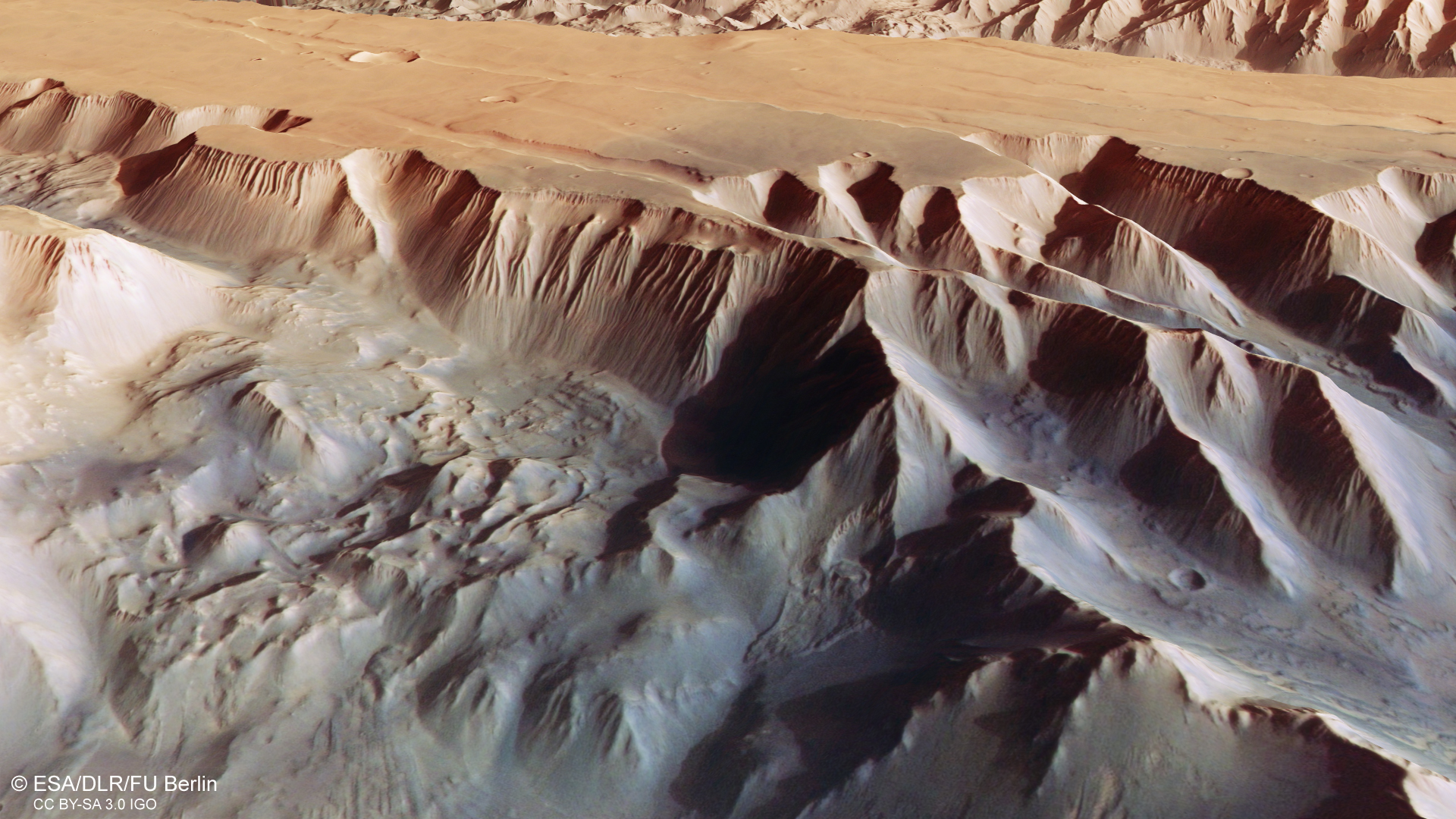—
The European Space Agency’s (ESA) Mars Express rover robot has captured a new view of the solar system’s largest canyon. Named Valles Marineris, the 4,000-kilometer-long canyon is called the Grand Canyon of the Red Planet.
The spacecraft, which has been exploring Mars since 2003, reveal some incredible details from the bottom of a canyon that reaches a depth of nearly seven kilometers, five times deeper than the great canyon in the United States.
There are two large “chasmas” or moats that form the western part of Valles Marineris. Ius Chasma stretches for 840 kilometers on the south side of the canyon, while Tithonium Chasma has a length of 805 kilometers on the north. They only cover about a fifth of the total area of Valles Marineris.
I capture the perspective of the Tithonian Chasma via ESA/DLR/FU BERLIN, CC BY-SA 3.0 IGO
—
These stunning photos were taken by the High-Resolution Stereo Camera last April, when Mars Express completed its 23,123rd orbit of the planet. The quality is so clear that it can help ESA scientists produce close-up perspective images of Tithonium Chasma that resemble aerial photographs. We can see dark sand dunes, huge mountains and landslides in the trenches, which are described in accompanying map.
While the steep valleys on Earth were formed by erosion of river water, scientists believe Valles Marineris was formed by tectonic activity that occurred on Mars more than three billion years ago.
Scientists recently discovered water ice reserve hidden beneath the surface of the canyon, suggesting that Valles Marineris may have been flooded at a time when the Martian surface was wetter and warmer than it is today.
–


